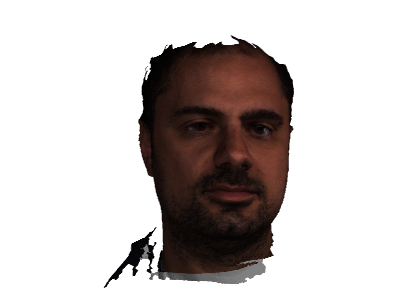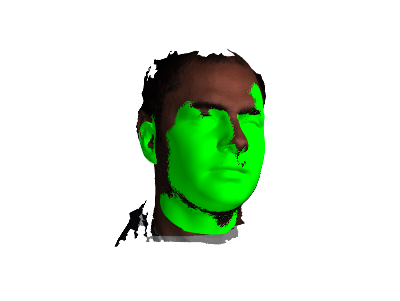3D Morphable Models of faces for medical applications
Outline
- Preliminary 3D
- Introduction to 3DMM
- 3DMM and Orthognathic Surgery
- Q&A
- Conclusion
Preliminary 3D
- Points (Vertices): x, y, z
- A set of points: PointCloud (>80.000 points)
- Edges: Connection between two points
- Faces: Three connected Points, Triangle
- 3D Mesh: Points + Edges+ Faces
- Texture, Normals
3DMM
- Introduced by Blanz and Vetter in 1999
- Statistical shape and texture models
- A 3DMM is a generative model for 3D object
- Key elements: The mean object $\mu$ and the principal variations $\mathbf{U}$
![]()
How to create a 3DMM
- Collect a dataset of 3D Meshes
- Bring every mesh of your dataset to correspondence
- Find the mean object and its principal variations
Large Scale Facial Model (LSFM)
- Mein3D database of more 10000 faces has been used
- 35 models for specific demographic groups
- Wide variety of age, gender (48% male, 52% female), and ethnicity (82% White, 9% Asian, 5% mixed heritage, 3% Black and 1% other)
Age histogram
![]()
Specificity
![]()
Generalisation
![]()
Compactness
![]()
![]()
Comparison
![]()
Visualization
![]()
Mimic Me
- A new dataset collected from April 2017-July 2017 at Science Museum London
- ~5000 subjects, in various expresions
- In total, more than 300,000 meshes
- Variety in ethnicity(White 76.57%, Asian 12.41%, Black 2.27%, Other 6.61%, Mixed 2.13%)s, age, gender
Data Collection
![]()
![]()
3DMM and Orthognathic Surgery
Automated computer assisted plastic and reconstructive surgery diagnosis and planning
Purpose
- Describe what a mean face looks like
- Normal face
- Patient face (preoperative and postoperative)
- Automated diagnosis of a face (e.g. GP)
- Automated surgery planning (e.g. specialist)
Datasets
- Data from Boston and Harvard Hospital
- ~151 subjects, with pre and post data
- Mean age 18.4 (2.4), range 14-28
- Variety in ethnicity(White 72%, Asian 10%, Black 8%, Other/Mixed 10%)
Intrinsic characteristics
![Down arrow]()
Mean faces
![Down arrow]()
Differences between mean faces
![Down arrow]()
T-SNE
![Down arrow]()
Classification
![Down arrow]()
Q&A
![Down arrow]()
Conclusion
- 3DMM powerfull and flexible representations for normal cases
- 3DMM can be used for craniosynostosis syndromes for diagnosis and prediction
- Orthognathic surgery can also be benefited
Thank you
![Down arrow]()
- Lara Van de Lande, MD, PhD Candidate
- Paul Knoops, Bioengineer, PhD Candidate






















